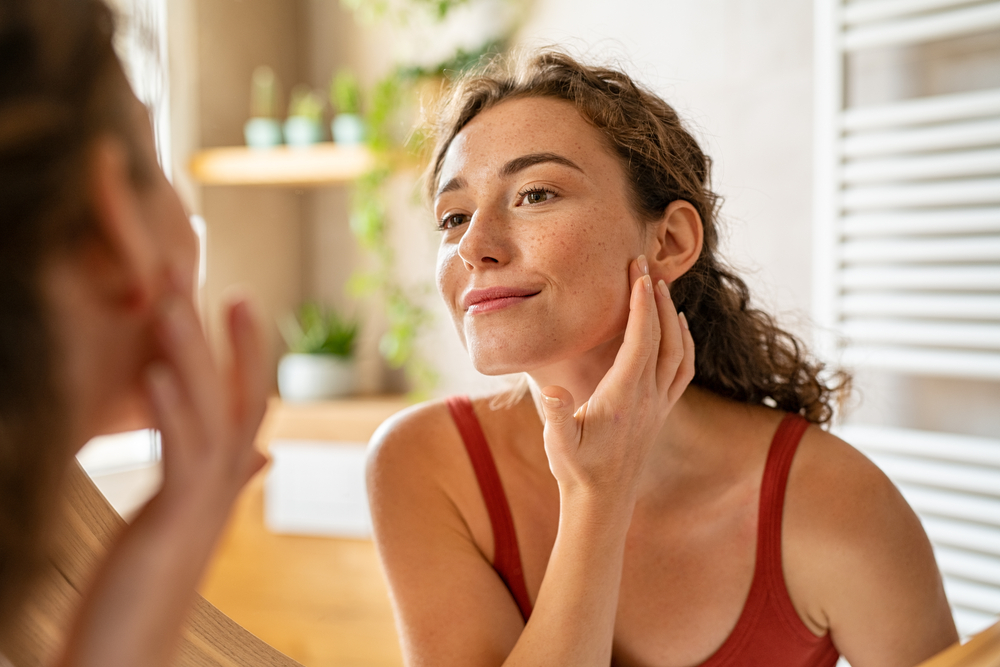


Is there a fountain of youth for aging skin? Many commercial products certainly claim as much—however, with proper care, we can preserve a youthful glow naturally.
Skin aging is a complex, physiological process determined by both intrinsic and extrinsic factors.
In natural aging, the skin becomes thinner and drier with wrinkles and changes in color becoming more evident. Genes are the key determinant of natural changes, and this type of aging is called “intrinsic aging.”
Premature aging of the skin caused by environmental and lifestyle factors is called “extrinsic aging.” The effects of this aging on the skin can be slowed down if some proper precautions are taken.
To prevent premature skin aging, dermatologists certified by the American Dermatological Association offer the following recommendations:
According to the Skin Cancer Foundation, photoaging is the main “culprit” of accelerated skin aging, which is caused by exposure to sunlight and ultraviolet (UV) rays.
The UV rays can penetrate deep into the dermis, destroy collagen fibers, increase the production of abnormal elastin, and lead to the production of metalloproteinase—an enzyme that rebuilds damaged collagen often malfunctions and degrades collagen, resulting in abnormal skin remodeling. The reconstructed skin will wrinkle, and the depletion of collagen will lead to accelerated aging of the skin.
“When it comes to wrinkles, there are other much more impactful factors than genetics at play. For instance, up to 90 percent of visible skin changes are a result of damage from the sun called photo damage,” says Ivona Percec, M.D., a plastic surgeon at the University of Pennsylvania Health System, on the Penn Medicine website.
Wearing sunscreen every day not only protects against skin cancer but also against the signs of photoaging. Regular use of sunscreen can prevent photo damage for a longer period.
“Some sunscreens now contain DNA repair enzymes that help undo previous damage by using nearby undamaged DNA to fix the area.” Melanie Palm, M.D., director of aesthetic medicine in Solana Beach, California, explains.
A study published in the Journal of Drugs in Dermatology in 2017 showed that products containing DNA repair enzymes can enhance skin anti-aging effects and reduce the incidence of actinic keratosis risk.
Dr. Palm recommends using a sunscreen that contains zinc oxide and/or titanium dioxide, which provides extended coverage against UVA rays and with a sun protection factor of at least 30.
Using a moisturizer, like sunscreen, is an important part of a daily skin-care routine. Moisturizers lock moisture into the skin to help make it look younger.
As one ages, the skin naturally produces less oil, and moisturizers can help to replace those oils. In addition, moisturizer temporarily increases skin plumpness, helping to reduce the appearance of fine lines and wrinkles.
Smoking can greatly accelerate the rate of skin aging, leading to wrinkles and a dull, sallow complexion. Moreover, alcohol can dehydrate and damage skin, lending to an older appearance.
An analysis of data from 3,267 white, Asian, Black, and Hispanic women on three continents showed that both smoking and drinking alcohol had a significant impact on skin and facial aging.
In July 2022, a genetic analysis published in Molecular Psychiatry showed that alcohol accelerates human aging by damaging DNA in telomeres.
Moderate exercise can improve blood circulation and strengthen the immune system, lending to a more youthful appearance in the skin. Studies have shown that exercise helps reduce skin aging, and these changes are associated with improvements in the tissue’s mitochondria.
Dr. Emily J. Kirby, a plastic surgeon in Fort Worth, Texas, believes that exercise provides nutrients such as vitamins and oxygen to skin cells, which help collagen repair and reproduction. Exercise (especially weightlifting) releases growth hormone produced by the pituitary gland, which stimulates fibroblasts, a collagen producer.
A 2020 study published in Nutrients shows that nutrition is closely related to skin health. Nutritional levels and dietary habits can repair damaged skin or cause damage to the skin. Clinical and epidemiological studies have demonstrated that nutritional levels and dietary habits have an impact on skin health and aging.
To better achieve the effect of delaying skin aging, choosing the right foods is key. Research shows that eating fruits and vegetables may be the healthiest and safest way to maintain youthful skin.
Even people who are already showing signs of premature skin aging can benefit from lifestyle changes. For example, protecting the skin from the sun gives it chance to repair damage. People who quit smoking also notice that their skin looks healthier. It’s never too late to start!
If you are experiencing increasingly severe signs of skin aging, such as wrinkles, sagging skin, age spots, or texture changes, it may be beneficial to consult with a dermatologist.
It is important to remember that skin aging is a natural process, but with proper care, it is possible to improve the appearance of aging skin and promote skin health.
What topics would you like to read about? Please let us know at health@epochtimes.nyc
